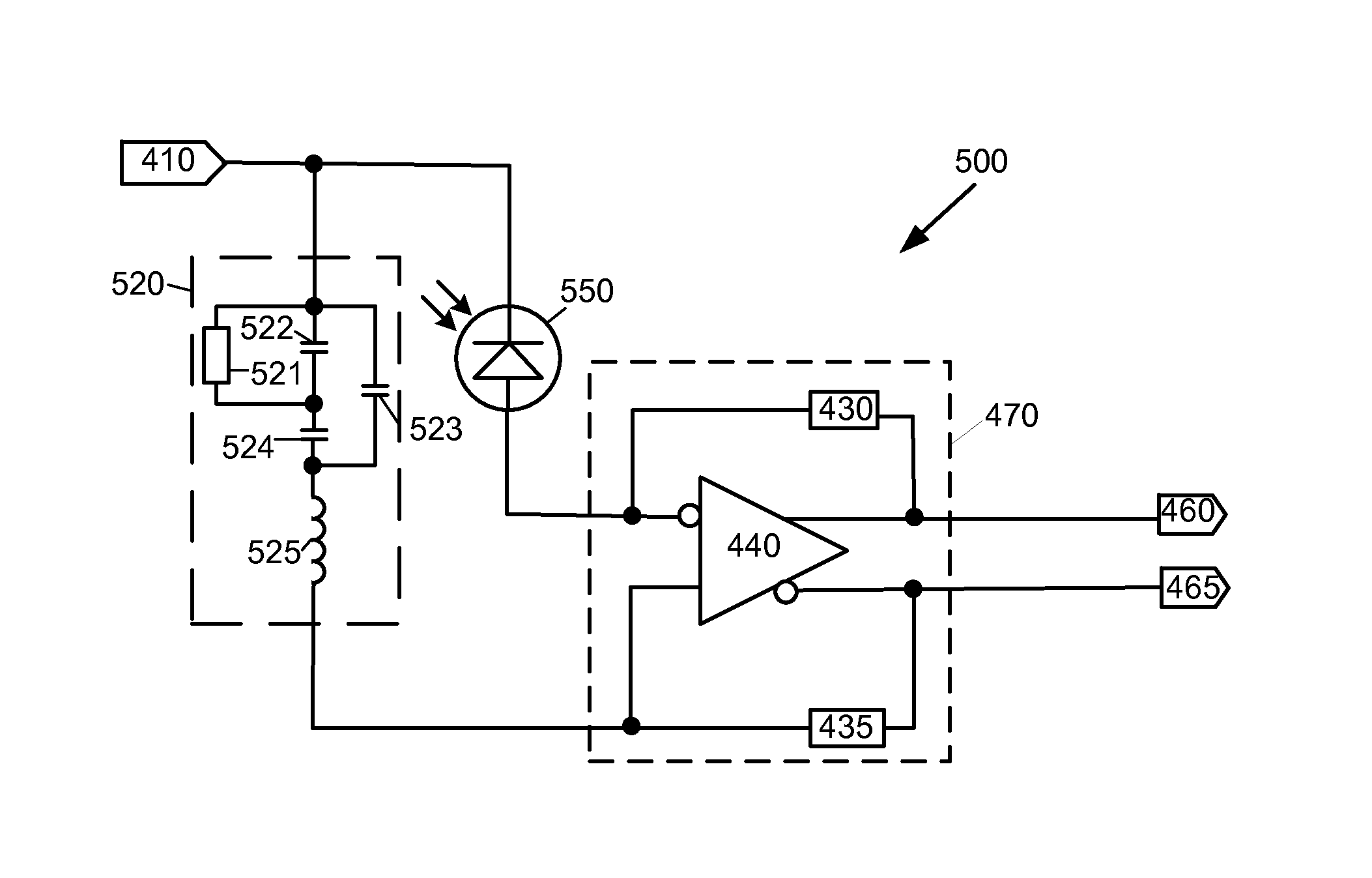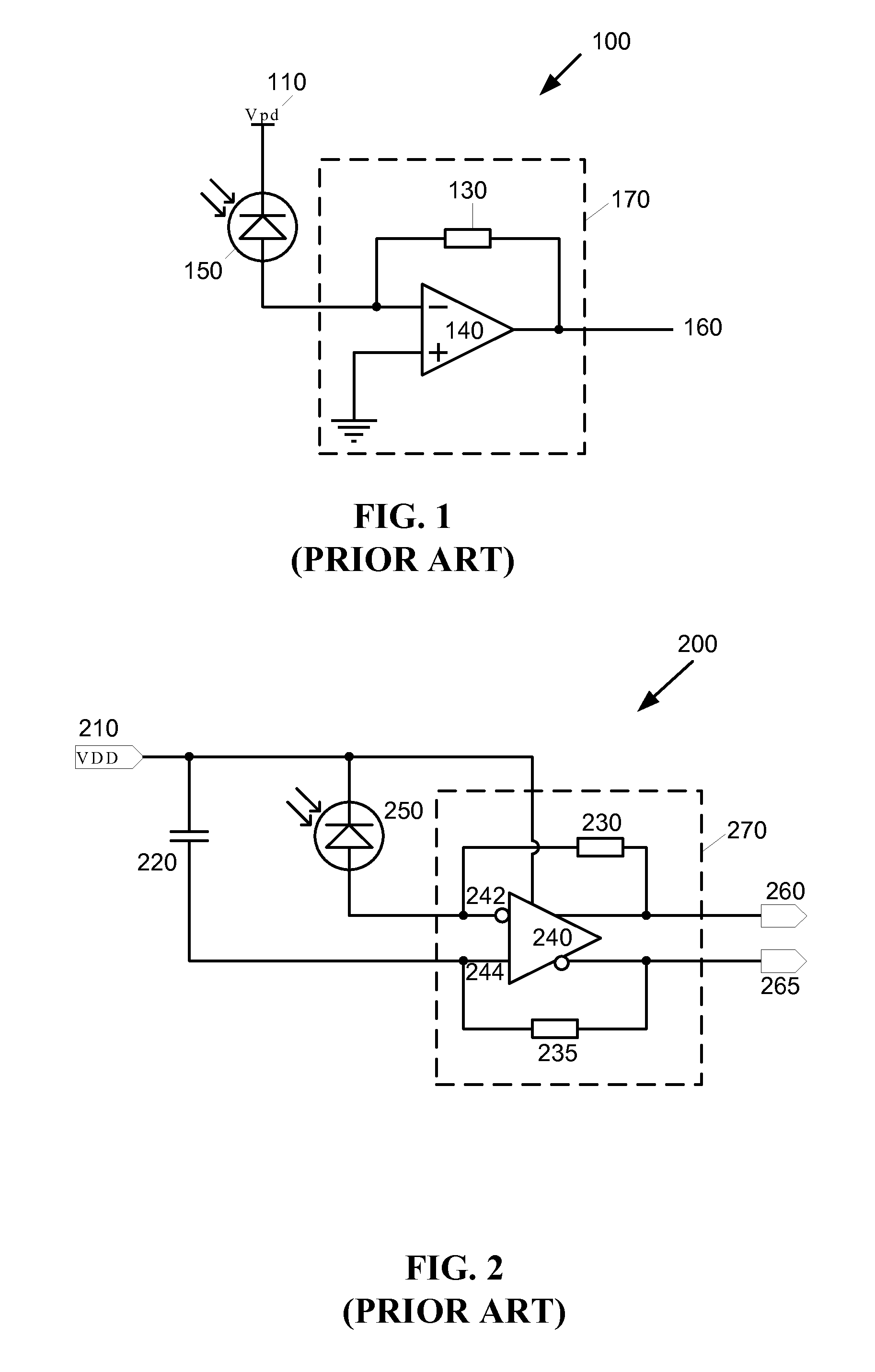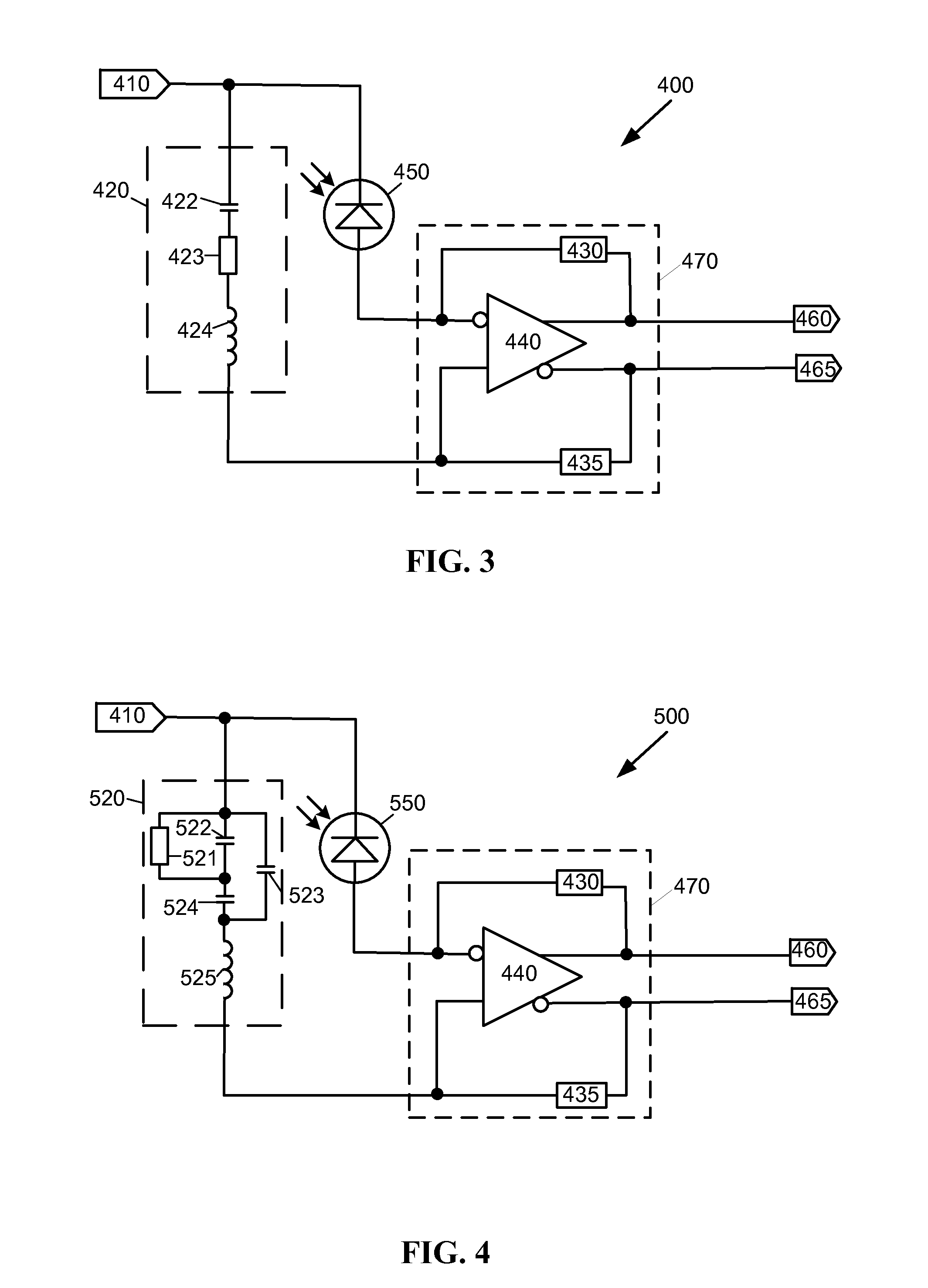Differential Optical Receiver for Avalanche Photodiode and SiPM
a technology of optical receiver and photodiode, applied in the field of light sensors, can solve the problems of limiting the usefulness limiting the performance of high frequency applications, and limiting the use of this prior art,
- Summary
- Abstract
- Description
- Claims
- Application Information
AI Technical Summary
Benefits of technology
Problems solved by technology
Method used
Image
Examples
first embodiment
[0031]A first exemplary embodiment of an optical receiver400 is shown in FIG. 3. The first embodiment includes an APD equivalent impedance 420, including a capacitor 422 having equivalent junction capacitance of the APD 450, a resistor 423 with equivalent series resistance of the APD 450 and an inductor 424 with equivalent inductance of the APD 450 interconnected to transimpedance amplifier 470 and the high voltage supply 410. In particular, the APD 450 is disposed between the high voltage supply 410 and a first input of the differential transimpedance amplifier 470, while the APD equivalent impedance 420 is connected between the high voltage supply 410 and a second input to the differential transimpedance amplifier 470 with outputs 460, 465.
exemplary embodiment 500
[0032]A second exemplary embodiment 500 is shown in FIG. 4. For a SiPM 550, the voltage sensing element 520 may be built using the equivalent circuit as proposed by Corsi F. et al, “Modeling a silicon photomultiplier (SiPM) as a signal source for optimum front-end design,” Nuclear Instruments and Methods in Physics Research A, 572 (2007), 416-418, where an equivalent SiPM quench resistor 521, a quench capacitor 522, a grid capacitance 523, a junction capacitance 524, and an inductor 525 representing the connection of the SiPM to the transimpedance amplifier 470 are used. The SiPM 550 is disposed between the high voltage supply 410 and the first input of the transimpedance amplifier 470, while the SiPM equivalent impedance 520 is connected between the high voltage supply 410 and the second input to the transimpedance amplifier 470.
[0033]In a third embodiment of an optical receiver 600 shown in FIG. 5, the total output noise of the receiver 600 may be reduced by filtering the second o...
seventh embodiment
[0046]The seventh embodiment optical receiver circuit 1110 configuration, shown by FIG. 9, advantageously uses a differential transimpedance amplifier 1180 where a first input of the differential transimpedance amplifier 1180 is connected to a photodetector 1150 and a second input of the differential transimpedance amplifier 1180 is connected to a high voltage supply 1110 variation sensing element 1122 of equal impedance to the photodetector 1150.
[0047]A second high voltage sensing element 1123 is connected to 2 current mirrors 1191 and 1192 in series which are used to inject a current of equal amplitude at both inputs of the differential transimpedance amplifier 1180.
[0048]Since the input signal of the current mirrors 1191 and 1192 is the same, the current injected in both inputs of the differential transimpedance amplifier 1180, is seen as a common mode signal rejected by the Common Mode Rejection Ratio of the differential transimpedance amplifier 1180.
[0049]The two current mirror...
PUM
 Login to View More
Login to View More Abstract
Description
Claims
Application Information
 Login to View More
Login to View More - R&D
- Intellectual Property
- Life Sciences
- Materials
- Tech Scout
- Unparalleled Data Quality
- Higher Quality Content
- 60% Fewer Hallucinations
Browse by: Latest US Patents, China's latest patents, Technical Efficacy Thesaurus, Application Domain, Technology Topic, Popular Technical Reports.
© 2025 PatSnap. All rights reserved.Legal|Privacy policy|Modern Slavery Act Transparency Statement|Sitemap|About US| Contact US: help@patsnap.com



